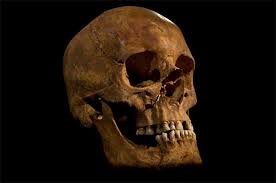Back in 2017, a ground breaking study by the British Geological Survey and the University of Leicester shed light on the lavish diet of King Richard III through an analysis of his teeth and bones. This research, conducted after the King’s remains were unearthed in Leicester in 2012, provided a fascinating look into the eating habits of one of England’s most enigmatic monarchs.
The study revealed that in the final years of his life, Richard III was consuming up to a bottle of wine a day, a reflection of the extravagant lifestyle befitting a medieval king. But it wasn’t just the wine that made his diet remarkable—he also feasted on exotic meats like swan, crane, heron, and egret. These were delicacies reserved for the elite, indicating that his meals were far richer than those of other high-ranking individuals of the time.
By analysing samples taken from his femur, rib, and tooth, scientists were able to reconstruct his diet over different periods of his life. Dr. Angela Lamb, a geochemist from the British Geological Survey, explained that Richard III’s diet in his last years was characterized by frequent banquets and heavy wine consumption, which left a noticeable impact on his bones.
"We know he was banqueting a lot more," Dr. Lamb said in 2017. "There was a lot of wine indicated at those banquets, and tying all that together with the bone chemistry, it looks like this feasting had quite an impact on his body in the last few years of his life."
This study, released in 2017, not only enriched our understanding of Richard III’s lifestyle but also highlighted how the extravagance of a king’s diet left lasting traces, offering a unique glimpse into the medieval past.
The research also suggested the king had moved out of eastern England by the age of seven, and lived further west - possibly in the Welsh Marches.
